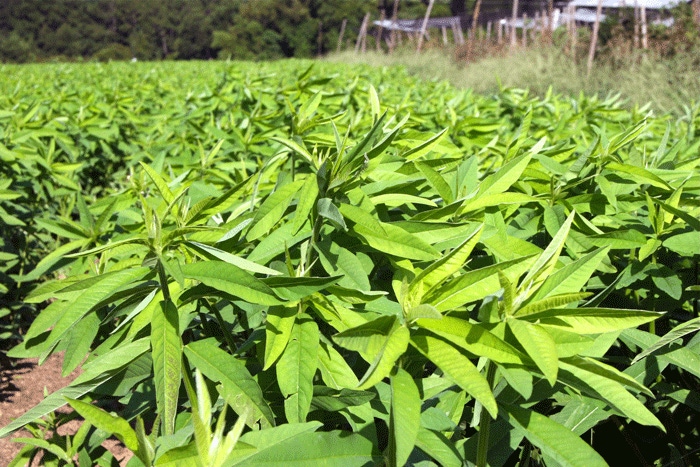September 3, 2012

U.S. Department of Agriculture-sponsored research at the University of Georgia campus in Tifton is looking into the potential of using a cover crop system to improve soil and prevent tomato spotted wilt virus.
According to Stuart Reitz, a research entomologist with the USDA, tomato spotted wilt virus is one of the most devastating insect-transmitted vegetable diseases. In the Southeast it affects everything from peppers to peanuts and can cause complete crop failures in the field.
“You certainly can’t grow tomatoes in this part of the country without trying to take some kind of management method to try to reduce the tomato spotted wilt incidence,” Reitz said.
In fact, after being in the Southeast for about 25 years, it’s becoming a global problem. The vectors for the disease are tiny, moisture-sucking insects called thrips. The primary culprits in the Southeast are Western flower thrips and tobacco thrips.
Cover crops to limit thrips
Reitz is investigating the potential of a cover cropping system to deter these species of thrips. Cover cropping is also used to build soil fertility, limit erosion and suppress weeds. Reitz is partnering with University of Florida Extension specialist Steve Olson and UGA entomologist Rajagopalbabu Srinivasan.
Cover crop rotation
Funded by the USDA’s Sustainable Agriculture Research and Education program (SARE), their research focuses on a cover crop rotation of lupin, bidens and sunn hemp. These plants are tested for their effect on thrips and the virus in tomatoes, peppers and cucumbers growing nearby.
According to Reitz, for unknown reasons cucumbers are not as susceptible to the virus in the Southeast, although feeding damage by thrips can lower their marketability and consumer appeal.
“We’re interested in developing some sustainable, non-insecticide based management methods for controlling thrips and thrip-transmitted viruses in these crops,” he said.
With these particular cover crops, the research is directed toward farming systems in the Southeast. But Reitz believes, with the right plants, the cover cropping system can be adapted elsewhere.
Non-pest thrips
Early returns in the first year of this three-year trial are intriguing, to say the least.
There are a number of different thrips that live in the Southeast, some of them closely related to Western flower thrips. These related species don’t seem to damage crops to the same degree as their cousins, and they don’t transmit the virus.
“Not all thrips are created equal. Some of them can actually have beneficial effects,” Reitz said. “In a sense we regard them as non-pests.”
More importantly, according to Reitz, when these non-pest thrips are in the farming system, research shows they outcompete Western flower thrips and suppress their population — essentially limiting their problem as a pest.
Careful use of insecticides
By disrupting the balance between pest and non-pest thrips, insecticides can actually increase the incidence of tomato spotted wilt virus, Reitz said.
“The non-pest competitor species are much more susceptible to virtually all insecticides than Western flower thrips,” he said. “So when they’re taken out of the system, Western flower thrips are freed from that competition, and their populations can build up.”
Reitz encourages growers and crop scouts to identify which thrips are in the field.
“We’re saying to look at which species are present, and if you have these non-pests, then let them stay. They’re not going to do the crop damage that the Western flower thrips will do,” Reitz said.
In addition to the UGA-Tifton campus, the experiment is currently being conducted at the University of Florida’s North Florida Research and Education Center in Quincy, Fla., and is scheduled to run for two more years.
After next year, there will be a demonstration trial on farms in Georgia and Florida to assess it on a commercial scale.
You May Also Like




